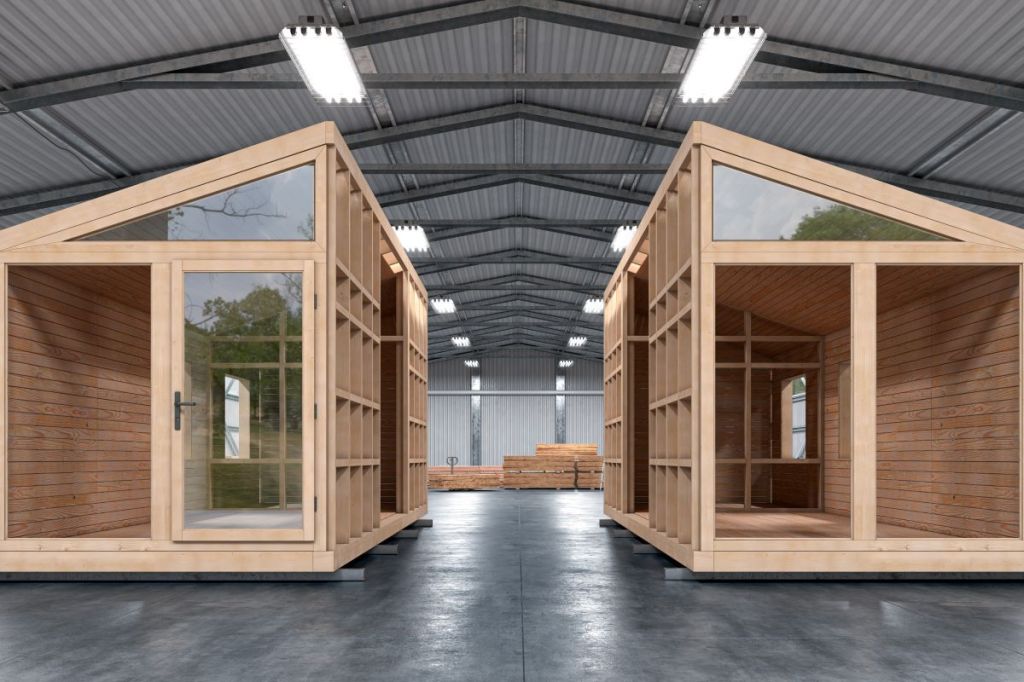In the realm of off-site and modular construction, knowledge of building codes and standards can understandably be confusing. How does an inspector confirm proper compliance when completed modules arrive on-site? What’s inside those walls or panels? That’s where the International Code Council (ICC) steps in, creating clear guidelines for the bustling and hopeful building sector.
“Codes are not scary things that keep us in the past,” says Ryan Colker, ICC vice president of innovation. “My role is to look across the country and see what’s happening in the building industry to know where the ICC should be plugging in and where we should be leading.”
Colker identifies emerging issues in the industry as well as how new construction technologies can modernize building regulations. He also works on solutions in energy efficiency, sustainability, and decarbonization—all which mesh closely with off-site and modular construction. “Off-site construction is certainly a space where we’re working to develop solutions that can also help address a lot of the challenges the U.S. is facing in terms of housing affordability and more,” he adds.

Courtesy International Code Council
Ryan Colker, International Code Council vice president of innovation.
Currently, Colker is seeing many new products in the sustainability front, including bio-based materials and a greater shift toward off-site construction to overcome labor shortages by limiting workforce needs.
Panelization—the framing of wall, floor, and ceiling assemblies done off-site in a climate-controlled environment—and volumetric modules are increasingly popular, Colker notes. To smooth out concerns surrounding panelization, he says the ICC is working on a guideline for advanced panelization.
Because building codes were primarily written from the perspective of traditional site-built construction, the ICC has worked to deliver standards to address the newer frontier. “If we’re bringing the construction process into a factory, the traditional approach of an inspector being able to show up to a jobsite and know what’s going on and poke behind the walls … those sorts of things can’t really happen,” Colker shares. “So, when you’re delivering a sealed-off box or panel to a jobsite, there needs to be strategies to demonstrate code compliance that also recognize the differences.”
To develop standards to help support those processes, the ICC has been working with the Modular Building Institute and has released ICC/MBI 1200 and 1205 to cut the confusion surrounding off-site construction. “Standard 1200 talks about the design, fabrication, and assembly process for off-site construction and how to demonstrate compliance with code requirements,” Colker explains. “Then 1205 covers the permitting inspection and that side of the equation. They really work together to create this system of assuring that off-site construction meets the code requirements.”
Additionally, Colker shares that standard 1210, which is in development, will address mechanical, electrical, and plumbing systems; energy efficiency; and water conservation of off-site construction. “There are two elements of the process, one is the interconnection of building systems when talking about off-site construction, and the other is looking at the opportunities to verify compliance or achieve energy efficiency and water conservation at the factory level instead of at the jobsite.”
On a tinier but equally important level, the ICC has initiated the development of standard 1215 that will specifically address questions related to tiny house construction. Colker says, “The challenge we’ve seen is that there are a few different types of tiny houses that folks could build so our approach has been that the standards or criteria followed should match how that tiny house is going to be used.
“If it’s going to be used as a permanent residence, it should meet the types of requirements as any other permanent dwelling, but there’s also standards that can be used for temporary or seasonal occupancy that are fine if that is how the structure will actually be used.”
And if shipping containers are appealing, the ICC developed Guideline 5 for the safe use of intermodal shipping containers repurposed as buildings and building components. “A few years back we saw a lot of interest in the use of shipping containers and also a lot of confusion on if it can be done,” he says. “There are criteria out there for people who want to use them, and we have an evaluation service that looks at the structural integrity of shipping containers, but we’ve definitely seen a slowing in use.”
When asked if there are any misconceptions around modular and off-site construction, Colker says that the perception of quality, particularly relative to compliance with code, is common. He shares that robotics and other degrees of automation enhance the quality of off-site construction.
“At the end of the day, if you’re not standing there when the modules get delivered and you just walk by a building, you wouldn’t be able to know what its construction method was,” he says. “We get wrapped around the early days of manufactured housing and those sorts of things, but we have certainly come a long way from that.”
Another note—and helpful advice—that Colker often sees as a misunderstanding is builders thinking they have to go “all in” if they want to pursue off-site construction.
“You don’t need to go full volumetric modules on day one,” he says. “You can look at incremental strategies, whether that’s panelization, bathroom pods, mechanical racking. There’s a spectrum of things you can do to dip your toe in the water and get some experience and comfort with off-site.”



